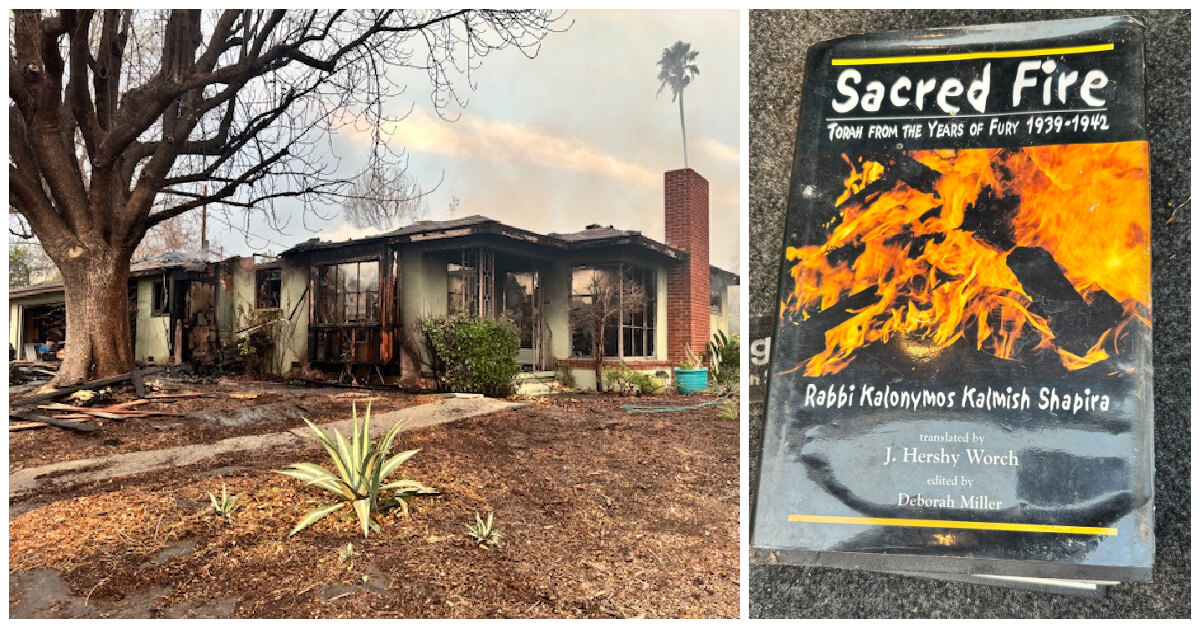Writer Discovers Romance in Kafka’s Happiest Chapter
Kathi Diamant didn’t really like Franz Kafka when she first read him.
Even today — more than 30 years after she first read “The Metamorphosis” — she doesn’t express the kind of veneration one would expect from the director of the Kafka Project at San Diego State University. “I prefer Kafka’s personal writing to his literature,” Diamant told the Forward during a phone interview. “His letters are works of art. I think you read much more about Kafka [the man] reading his personal work.”
For Kathi Diamant, Kafka is secondary to the historical figure she is most obsessed with: Dora Diamant, Kafka’s last mistress.
Kathi is not related to Dora — at least not as far as she can prove. (She has not given up trying; she knows Dora’s relatives in Israel quite well. “We haven’t taken the DNA test yet,” she said.) But since the mid-1980s, Dora has been the dominant subject of her professional life. The blond-haired, 50-year-old former television producer, now an adjunct professor at San Diego State, has written a play, a novel and an unproduced screenplay about Kafka’s mistress. An opera based on Kathi’s writings is being composed by Michael Nyman, who scored the film “The Piano.” Her most recent work, “Kafka’s Last Love” (Basic Books), is the first historical book completely dedicated to Dora.
Kathi first heard about Dora in a German literature class at the University of Georgia when she was 19. “We were translating Kafka’s ‘Metamorphosis,’ and the teacher asked me, ‘Are you related to Dora Diamant?’” Kathi said. “I wasn’t doing too well in the class, so I said, ‘Sure! Who is she?’”
After her professor explained who Dora was, Kathi went to the library where she saw a photo. Dora, as Kathi writes in her book, “wasn’t beautiful…. She was short, about 5 feet, 2 inches, and tended to put on weight…. Her face was too round, lips too full and mouth too wide for classic beauty.” But the photo planted the first seeds of Kathi’s subsequent obsession. “I couldn’t sleep that night,” Kathi said. She called her parents and asked if they knew of any family connections to Dora. They did not.
Kathi did not return to Dora until 1984, when she saw a museum exhibit of Jewish artifacts from Czechoslovakia. In a photograph from the Pinkas synagogue in Prague, Kathi spotted the name Diamant among the names of the congregation’s members, and she wondered about the life Dora led after Kafka died. A quest for information began that would take Kathi to Prague, Berlin, London and Tel Aviv.
A great deal of scholarship has been devoted to Kafka’s other mistresses. His letters to Milena Jesenka and Felice Bauer have been published, and the nervous relations and broken engagements Kafka had with them have been well-documented. But Dora has largely been brushed aside by Kafka scholars. “For many, many years she was discounted — they said he could not have had a real relationship with her because she was so much younger,” Kathi said. Most scholars believed — falsely — that Dora was 19 when she first met the 40-year-old Kafka; Kathi discovered that she was actually 25.
Unlike other heroines of the real-life literary world — such as James Joyce’s wife, Nora Barnacle, who inspired the Molly Bloom character in “Ulysses” — Dora met Kafka long after he had written his masterworks. (Kafka wrote only three major short stories after meeting Dora.) In many ways, “Kafka’s Last Love” is far different from books like Brenda Maddox’s “Nora: The Real Life of Molly Bloom” (Houghton Mifflin, 1988) or Stacy Schiff’s great biography “Vera (Mrs. Vladimir Nabokov)” (Random House, 1999). While those books keep the famous authors in central focus, Kafka’s casket is lowered into the ground about a third of the way into “Kafka’s Last Love.”
The rest of the book concerns Dora, the woman. She was born in 1898 into a chasidic family in Pabianice, Poland. She met Kafka in Germany, shortly after she had abandoned her family’s religious orthodoxy for the world of secular Zionism. She and Kafka relocated to Berlin together after they met and stayed there until he was moved to a sanitarium in Austria, where he died. Dora returned to Germany, where she met and married a young socialist named Ludwig Lask. She left for the Soviet Union in 1936, only to move on again two years later. She arrived in 1940 in England, where she spent most of the remainder of her life.
Kathi was never trained as a literary scholar. The daughter of two actors, she studied drama in school and, after graduating from college, traveled the world until she got a job in television. She eventually rose to become co-host of the morning show “Sun Up San Diego.” It was only after her show was canceled that Kathi plunged into the world of Dora Diamant full time.
Although she has no graduate degrees, Kathi has done a remarkable amount of original research. She discovered Dora’s unmarked grave in London and raised money for a new headstone for her. With her sister acting as translator, Kathi combed German archives looking for Kafka’s last manuscripts — which Dora falsely claimed she had burned — and Dora’s letters that were seized by the Gestapo. Kathi uncovered countless letters and a diary Dora wrote during the last year of her life. She tracked down Kafka’s niece, Marianne Steiner, and Dora’s friend Johanna “Hanny” Lichtenstern in London and interviewed them. Moreover, she found Dora’s relatives in Israel — separated from each other since the Holocaust — and reunited them.
What Kathi found might strike the Kafka reader as startling. Kathi claims that there was true romance and happiness between Kafka and Dora. “She influenced his life, absolutely,” Kathi said, adding that Dora wrote “the final, happy chapter of his life.” Kafka may have been known as a dark nihilist, but Kathi claims he saved his darkness for his art.
A message from our Publisher & CEO Rachel Fishman Feddersen

I hope you appreciated this article. Before you go, I’d like to ask you to please support the Forward’s award-winning, nonprofit journalism so that we can be prepared for whatever news 2025 brings.
At a time when other newsrooms are closing or cutting back, the Forward has removed its paywall and invested additional resources to report on the ground from Israel and around the U.S. on the impact of the war, rising antisemitism and polarized discourse.
Readers like you make it all possible. Support our work by becoming a Forward Member and connect with our journalism and your community.
— Rachel Fishman Feddersen, Publisher and CEO























